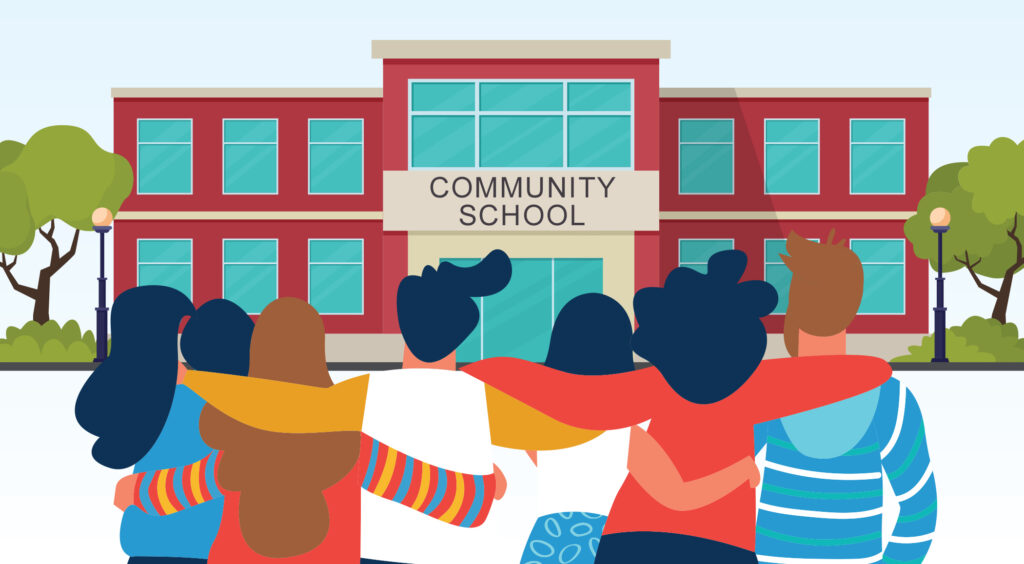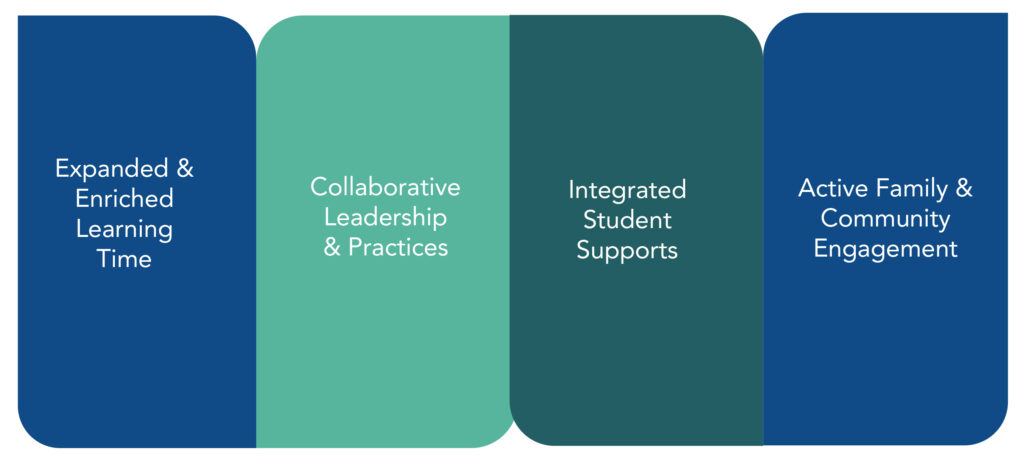Community Schools

A Community School is both a place and a set of partnerships between the education system, the nonprofit sector, and local government agencies. While the specific programs and services vary according to local context, a Community School is a “whole-child” school improvement strategy.
The Learning Policy Institute has identified four unifying pillars in the Community School approach, as outlined below.

For more information, please contact:
Anita Cruz, Director Community Schools
ancruz@kern.org
Angie Ranches, Community Schools Support
anranches@kern.org
Juan Carrasco, Community Schools Implementation
jucarrasco@kern.org
Ericka Pineda, Community Programs and Outreach Specialist
erpineda@kern.org
Click Below to Find Out More About Each Pillar
Highly effective Community Schools provide expanded learning time and ample enrichment opportunities. This means that the focus on students’ academic success and social and emotional development is also supported outside of the regularly school day. Moreover, students are provided with high-quality programs and opportunities for enrichment activities for real- world learning. This includes arts, physical activity, small group, or individualized academic support, and hands-on learning activities across a range of subject areas. After school, weekend and summer programs provide additional academic instruction and individualized support. As with student support, Community Schools work with partner organizations, in collaboration with teachers, to support these expanded and enrichment opportunities for students. They utilize these partner resources to secure internships, provide service learning, STEM programs and other community, arts, or work-based opportunities. These programs are integrated into the school’s existing academic programs. Therefore, close relationships are established with families in order to monitor student attendance and provide student referrals when and if needed. Teachers, other school staff, and the community are active partners in development and implementation of these programs, as they are meant to be aligned with curriculum whether they take place during class time or outside of class time.
Collaborative leadership and practices in a Community School can be seen as the process that links the other three pillars. This practice starts with the development of a unifying vision and goals and the identification of shared responsibilities among stakeholders. Collaborative leadership should extend beyond the school team. It should include students, families, community members and leaders of community-based organizations, local government agencies, and university partners. The heart of collaborative leadership is the Advisory Council. The Community School Advisory Council is a leadership team that’s made up of diverse stakeholders from across sectors. They are responsible for assessing needs, resource distribution, and continuous improvement, as well as the coordination of services and supports.
Community Schools utilize the “holistic” framework when addressing student needs. This means while academic learning is a focus, so are student’s social and emotional needs, since they are inextricably linked. Community Schools provide a wide range of services and supports to address inequities and overcome both academic and non-academic and non-academic barriers to learning and success. While every Community School has different priorities based on their identified needs, all Community Schools strive to provide at least the most basic services and supports, including medical, dental, and mental health care services, as well as tutoring and other academic supports. Resources for families are also made available, such as parent education, housing assistance and job training. These supports are secured through partnerships with local social and health services agencies, non-profits and other community-based organizations. Community Schools also employ social-emotional learning, conflict resolution and restorative justice practices to support mental health and decrease conflict, bullying and punitive disciplinary actions. Integrated student supports function best when managed collaboratively, rather than by any one individual at a school site. This most commonly occurs through the Advisory Council. It is here that the impact of these supports on student outcomes are assessed during implementation. All supports and interventions are connected to observable and measurable indicators of success. This allows the Advisory Council to monitor impact and revise plans as needed, providing continuous improvement.
Active family and community engagement is essential to the success of a Community School. By promoting interaction among families, administration, and teachers, Community Schools invite families to be more involved in decisions about their children’s education. As a result, schools are seen as educational partners and as a neighborhood hub for learning. Community Schools foster trusting relationships with all stakeholders and help build their capacity in an effort to create a decision making process that is inclusive, empowering and built on trust and respect. Community Schools thus strive to create systems and structures for shared leadership, as well as welcoming environments for families and community members, allowing them to feel valued as essential partners. Active family and community engagement in a Community School should take into account the historical and cultural barriers to involvement in disenfranchised communities. Staff should make efforts to address these barriers, including language barriers, inflexible work schedules, and reliance on public transportation. Moreover, Community School staff work to streamline access to services and scheduling programs, workshops, meetings and other events at times that allow the greatest participation.
Watch A Video About Community Schools

